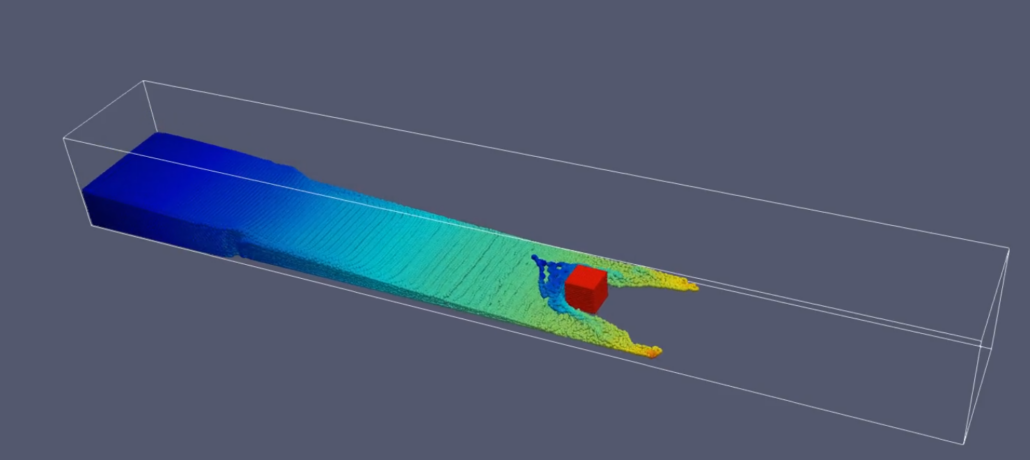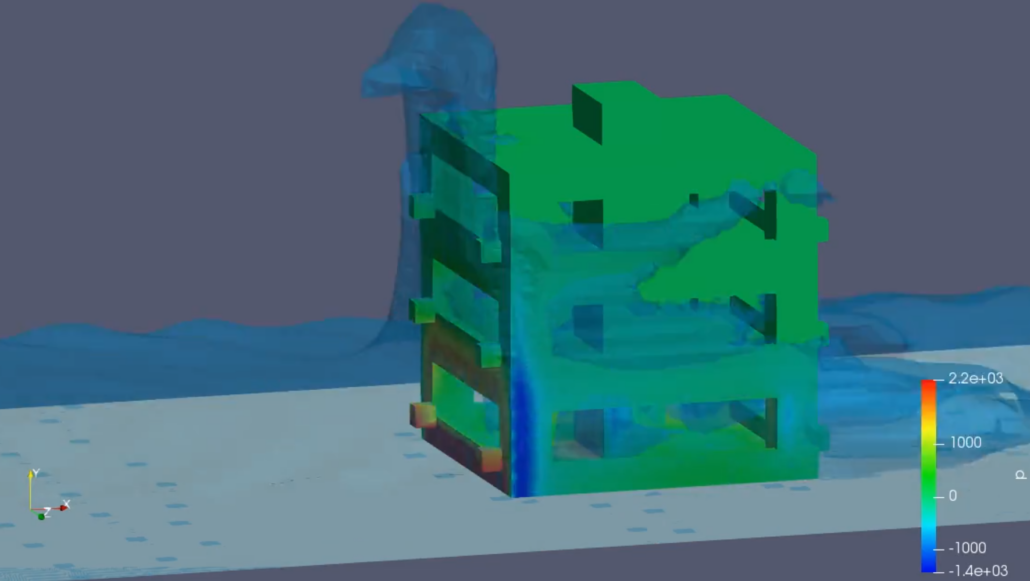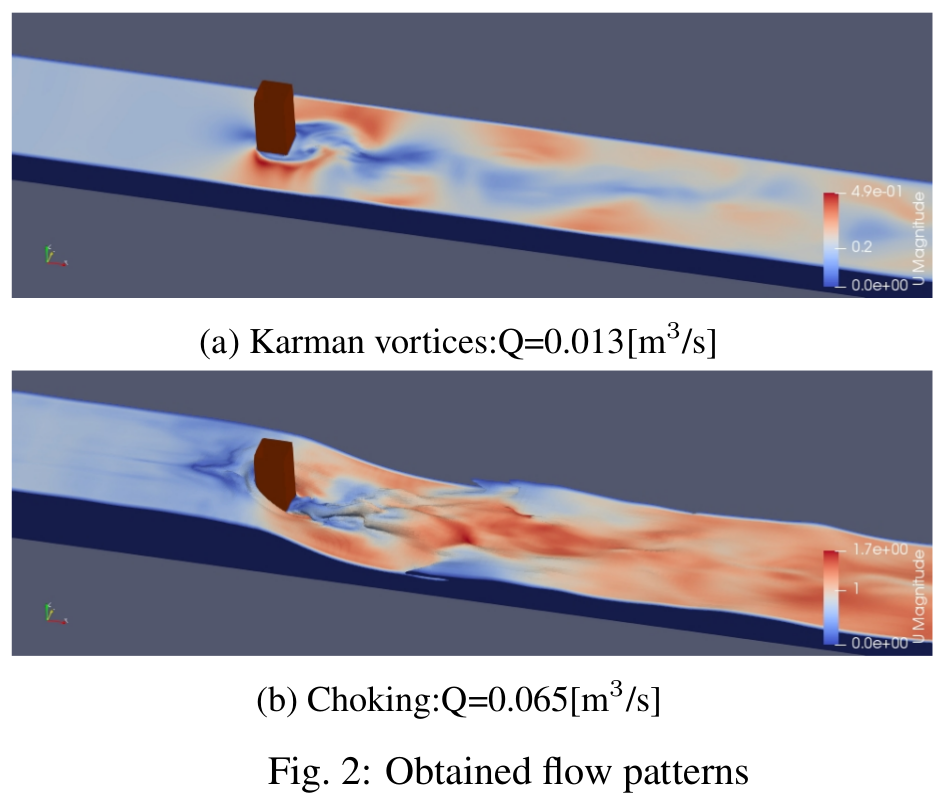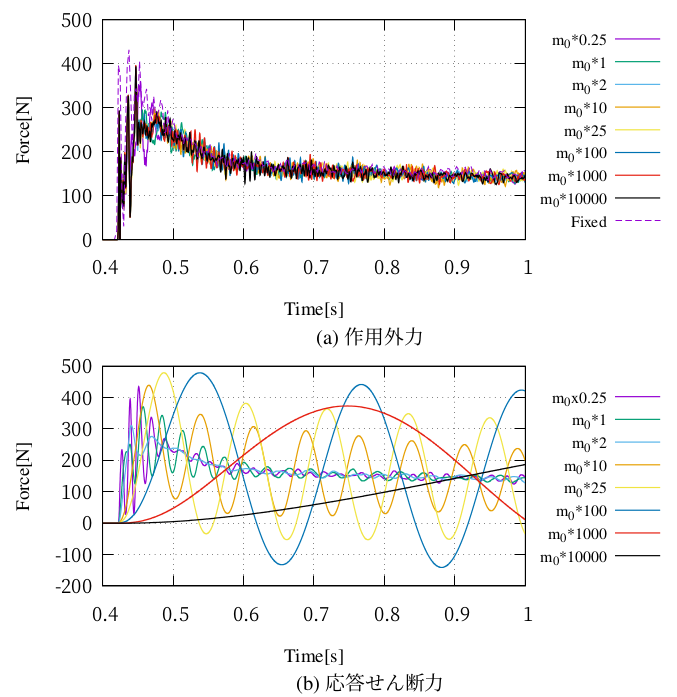Next Generation Numerical Simulations in Construction
Free surface fluids in the construction industry and Numerical analysis of architecture
In this course, we aim to clarify the various effects that fluids with free surfaces, such as water, have on buildings by using fluid analysis methods such as the finite volume method (FVM) and particle methods (MPS, SPH).
We are currently conducting research on the following topics:
Evaluation of hydrodynamic forces acting on buildings due to tsunamis and floods
The purpose of this study is to use computational fluid analysis to evaluate the impact, drag, and uplift forces acting on structures caused by tsunamis and floodwaters resulting from the collapse and overflow of river levees, using the finite volume method (FVM) and particle method (MPS, SPH), to clarify the governing parameters, and to establish a simple evaluation method.






Response of structures to hydrodynamic forces due to tsunamis and floods
The leading edge of floodwaters caused by tsunamis or levee collapses exerts an impact force on building structures. Structures subjected to horizontal forces from floodwaters behave elastically or elastoplastically depending on the structure’s strength and the magnitude of the impact force. There are few analytical studies on the impact force of floodwaters on structures, so in this study we first focus on the elastic response.
It is known that the effect of an impulsive force on the elastic response of a structure depends on the natural period of the structure and the duration of the impulsive force.
In this study, based on Kleefsman’s experimental setup, we performed a fluid-structure interaction analysis using the SPH method to evaluate the effects of the impact force at the front of the flood flow and the vibration characteristics of a building modeled as a single-mass system on its response.


Evaluation of the fluidity properties of fresh concrete
To guarantee the quality of concrete structures, it is necessary for high-flow concrete to fill every nook and cranny of complex cross-sectional shapes without any gaps. To confirm this, construction experiments are required, but it is difficult to carry out adequately due to the cost and time required. Therefore, techniques for evaluating constructability using computational fluid analysis are attracting attention.
In computational fluid analysis, Bingham fluid is often used to model fresh concrete (hereafter referred to as FC), but the presence of coarse aggregate makes it difficult to directly measure its physical properties. We investigate the applicability of the finite volume method to model the fluidity of fresh concrete.



